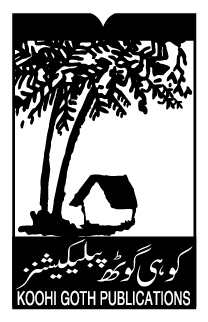Case-based learning: a successful teaching tool of physiology for medical undergraduates. A cross-sectional study in LUMHS.
Keywords:
Case Based Learning, Scenarios, Medical Education, Students, Critical Thinking, Student Feedback, Teaching Module.Abstract
Background: Physiology is the basic and most crucial subject that is being taught in the early years of medical life as it lays the foundation upon which all major subjects, including medicine and surgery, rest, so its understanding and implication are of the utmost importance for all medical students. For many years, students in Physiology were taught using traditional methods such as demonstrative lectures, which made up more than 70% of the whole curriculum. As a result, students are unaware of the importance of physiology and its role in medical advancement. Recently, CBL (Case-based learning) has been employed in medical programs to expose students to real-life scenarios, strengthen fundamental topic knowledge, and improve their problem-solving ability.
Objective: This research aims to determine the effects of CBL sessions on MBBS students and to examine the attitudes of faculty and learners on the efficiency of the CBL strategy among students of Liaquat University of Medical and Health Sciences Jamshoro medical students (LUMHS).
Methodology: This cross-sectional study was conducted involving 411 medical undergraduates of Lumhs, including both male and female students and teaching faculty involved in CBL sessions, following all inclusion criteria. A Random sampling technique was used for sample selection to minimize the bias. Out of 411 sample size male students were 157(38.1%) and female 254(61.8%) respectively, studying form 1st year and 2nd year MBBS students of Lumhs campus. And 10 teachers who are conducting case-based learning sessions weekly at the physiology department were interviewed, and their responses were included in this study. Data was collected using a self-reported questionnaire, and then SPSS version 26.0 was used to analyze the data and put out tables and figures. It was determined that a P-value of 0.05 or lower was significant.
Results: Data from this study shows that 97% of students and 100% of teachers think that CBL sessions help them understand the topic better, whereas 90% of students and 90% of teachers think that CBL helped bridge the gap between theory and clinical scenarios. Furthermore, research shows that 70% of students and 60% of teachers think that cases that were presented in CBL sessions were interesting, 98% of students and 100% of teachers prefer CBL sessions over old methods of learning, 90% of students and 70% of teachers think that CBL sessions motivate them to learn Physiology in-depth, this shows that CBL sessions have very positive overall effects on the students as well as teacher, and this is a very effective tool of teaching Physiology.
Conclusion: Our research has proven that Physiology students may benefit from the unique and effective CBL teaching style. Case studies in the classroom improve student engagement, critical thinking, and intrinsic motivation. Their general comprehension of the subject improves, their recollection of the topic's key elements improves, they get better at interpreting clinical settings, and their overall interest in the subject grows.
Downloads
Published
How to Cite
Issue
Section
License
Copyright (c) 2023 The Author

This work is licensed under a Creative Commons Attribution 4.0 International License.








